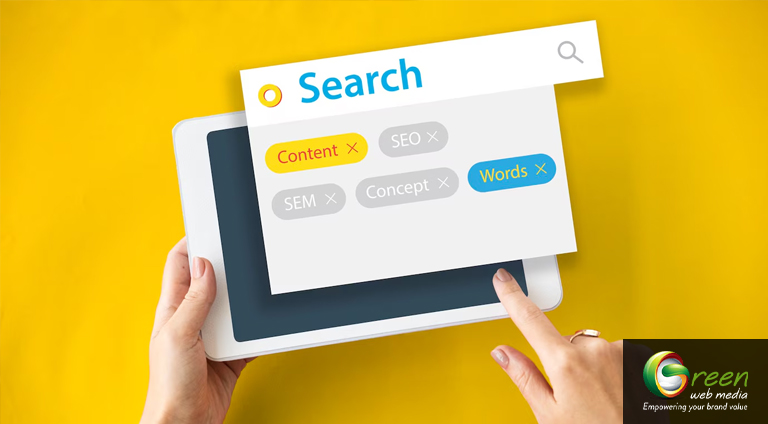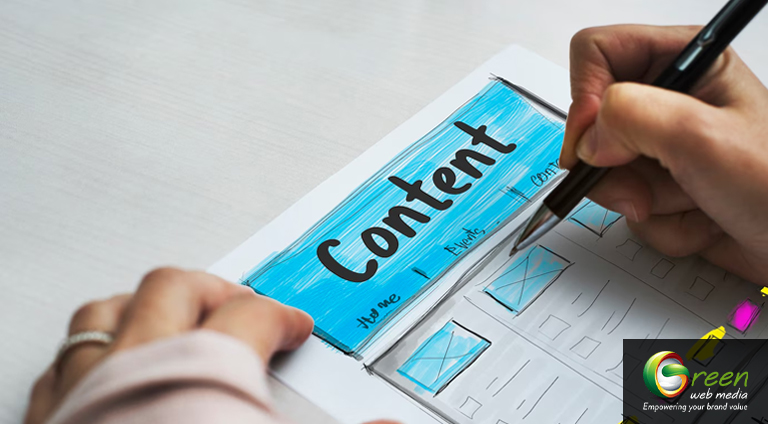Boost Your SEO & Marketing- The Role of Search Intent

Red pie and pancake Morocco. There is no way we can understand what that line means, but Googe does. Similarly, why people search for certain information is as important as knowing what they’re searching for. As you uncover this and if your business offers red pies and pancakes, you will benefit from Google.
In general, this concept is called search intent. Often, it is a cornerstone of effective search engine optimization and all your digital marketing strategies. So, grasping the nuances of search intent can significantly improve your digital presence. For businesses, it means they can connect with your target audience more effectively.
Read on to explore search intent in detail. This blog explains its types, significance and how you can use its power to elevate your SEO and marketing efforts.

What Is Search Intent, in detail?
Search intent, also known as user intent or query intent. This refers to the primary goal a user has when typing a question on Google. It can be the ‘why’ behind a search – what the user hopes to accomplish, learn, or find when they hit that search button.
Consider this as the underlying motivation driving a person’s online surfing. When someone types “best pizza in New York”, their intent might be to find a restaurant for dinner. But, if they search for “how to make pizza dough,” their intent can be to learn a new skill or find a recipe for mozzarella pizza.
Thus, understanding search intent is very crucial. It allows you to create content that precisely matches what users are looking for. This might also increase the likelihood of your content being found and valued by both users and search engines.

Types of Search Intent and Their Characteristics
Search intent can generally be categorized into 4 types. Read on to explore each type, and we also include examples to illustrate their unique characteristics:
[1] Informational Intent
Informational searches are driven by a desire to learn something new or find specific information. These queries often start with question words like “how,” “what,” “why,” or “when.”
Examples:
- “What is blockchain technology?”
- “How to tie a tie”
- “Symptoms of fever”
Characteristics:
- Often in question format
- People may be looking for detailed explanations or step-by-step guides
- May involve broad topics or specific queries
[2] Navigational Intent
Navigational searches are tied to a specific website or webpage. People know where they want to go, and they use Google as a shortcut.
Examples:
- “Facebook login”
- “Nike official website”
- “NY Times sports section”
Characteristics:
- Often include brand/website names
- Looking for a direct path to a specific online destination
- Users have a clear idea of the desired result
[3] Commercial Intent
Commercial searches indicate that a user is interested in making a purchase but is still in the research phase. They’re comparing options, looking for the best deals, or seeking reviews.
Examples:
- “Best smartphones 2024”
- “Sony vs. Samsung TV comparison”
- “Electric car reviews”
Characteristics:
- Often include words like “best,” “top,” “review,” or “vs.”
- Looking for product comparisons or expert opinions
- Indicates interest in making a purchase but not immediate readiness
[4] Transactional Intent
Transactional searches show a clear intent to complete an action, often a purchase. These users are ready to buy or take a specific action.
Examples:
- “Buy iPhone 15 Pro”
- “Book flights to Paris”
- “Subscribe to Netflix”
Characteristics:
- Include action words like “buy,” “order,” “purchase,” or “download”
- Often include specific product names or services
- Users may/will complete a transaction
Why It’s So Important to Get This Right
Correctly interpreting search intent is crucial for several reasons, namely:
[1] Improved User Experience
As your content matches the user’s intent, people will engage with it. Users always prefer quick responses. So, working on UI/UX will increase satisfaction and the likelihood of them returning to your site.
[2] Higher Engagement Rates
Content that aligns with search intent is more likely to be read, and people will share this more. This increased engagement signals to search engines like Google that your content is valuable.
[3] Better Conversion Rates
You are more likely to guide them towards the desired action after understanding search intent. You can now push them to do a purchase or even sign up for a newsletter or subscribe to your YouTube channel.
[4] Reduced Bounce Rates
You want to buy red sneakers, but all you see on the webpage are white ones. You’ll get irritated. So, we all prefer to find exactly what they’re looking for on your page. Now, they will be less likely to immediately leave (bounce) and return to your competitor’s page.
[5] Efficient Resource Allocation
Understanding search intent helps you focus your content creation efforts. You may know what your audience actually wants and save time and resources.
Why Prioritize Search Intent for SEO
Search engines, notably Google, are getting increasingly sophisticated in focusing on search intent. Learn why it matters for SEO:
[1] Ranking Factors
Search engines use intent as a ranking factor. Content that best matches the perceived intent of a query is more likely to rank higher.
[2] Featured Snippets
Understanding intent helps optimize featured snippets, which are the highlighted search results at the top of the page. These often appear for informational queries.
[3] Voice Search Optimization
People now use voice search more. Thus, understanding natural language queries and their intent becomes crucial.
[4] Long-Tail Keywords
Intent helps identify and optimize long-tail keywords, which often have higher conversion rates.
[5] Content Strategy
It may often guide your overall content strategy. Search intent can help you create a mix of content that caters to different stages of the customer journey.

Learn To Determine Customer Intent Behind a Keyword
Identifying the intent behind keywords requires a combination of tools and analytical thinking. Follow this step-by-step approach:
[1] Analyze Search Results
You can Google the keyword and examine the top-ranking pages. The type of content it prioritizes may often reflect the dominant intent.
[2] Look for Intent Signals in the Keyword
Words like “how to,” “buy,” “versus,” or “near me” can indicate specific intents.
[3] Use Keyword Research Tools
There are various tools like SEMrush, Ahrefs, or Google’s Keyword Planner are available. Use them for related searches and understanding user behaviour.
[4] Consider the Customer Journey
Think about where the keyword might fit in the customer journey. It can be used to create awareness about your product. They may then consider it to reach a decision stage.
[5] Analyze User Behavior Data
Now that you have added the keyword to your site look at different metrics. Compare bounce rate, time on page, and conversion rate to understand the behaviour of users on your web page.

Why & How to Create Content That Meets Search Intent
Once you’ve identified the intent, it’s time to create content that meets it perfectly. Here are some strategies:
[1] Match Content Format to Intent:
- For informational intent: Create detailed guides, how-to articles, or explanatory videos aimed to help the users.
- For navigational intent: Check your website is easily navigable and your brand pages are optimized.
- For commercial intent: You can develop comparison articles, buying guides, or detailed product reviews.
- For transactional intent: Create clear product pages with easy purchase options or straightforward service sign-up processes.
[2] Optimize Page Structure:
- Use clear, intent-matching headlines and subheadings.
- Include a table of contents for longer, informational content.
- For transactional pages, place call-to-action buttons prominently.
[3] Provide Comprehensive Information:
- Answer all potential questions related to the search query.
- Try a mix of text & images to cater to different learning styles.
[4] Keep Content Fresh and Updated:
- Try to regularly update your content to ensure it remains relevant and accurate.
- You have to add new information as it becomes available, especially for informational and commercial content.
[5] Optimize for Featured Snippets:
- For informational queries, structure your content to directly answer questions.
- You can add bullet points/lists and tables where appropriate.
[6] Enhance UI/UX:
- Your website must be mobile-friendly and load quickly.
- Make navigation intuitive and easy.
- Include internal links to related content to keep users engaged.
[7] Incorporate Relevant Keywords:
- Use the main keyword and related terms naturally throughout your content.
- Include long-tail variations that match the intent.
[8] Create a Content Funnel:
You can make content that guides users from informational to transactional intent as they move through the buyer’s journey.
[9] Use Clear Calls-to-Action (CTAs):
- Align your CTAs with the search intent.
- For informational content, you might invite users to read related articles.
- For commercial intent, encourage users to view product details or comparisons.
- For transactional intent, make it easy to complete the purchase or desired action.
[10] Time to Monitor and Adjust:
- Regularly check your content’s performance in search results.
- Analyze user behaviour metrics and then adjust your content strategy consequently.
Final Thoughts
Understanding and aligning with search intent is the best practice in SEO and digital marketing – it is also a necessity. As you create content that precisely matches what users are looking for, you improve your search engine rankings. This can also provide genuine value to your audience. Add this approach to build trust and ultimately drive better results for your digital marketing efforts.
Remember, the digital domain is always evolving along with search engine algorithms. You have to stay informed about the latest trends and your goals. Try to continuously refine your marketing strategies with search intent in your mind. This can often guarantee your content remains relevant and valuable to your target audience. Mastering this practice will connect with your audience more effectively and help you achieve your digital goals.
FAQs
- How is search intent different from keywords?
Search intent is the purpose behind a search, while keywords are the words used in the search.
- How often should I update content for search intent?
You can review every 3-6 months, or more frequently for fast-changing topics.
- Can search intent for a keyword change over time?
Yes, it can change due to events, algorithms or shifts in user behavior.
- How does search intent affect bounce rates?
Matching intent reduces bounce rates as users find relevant information on your webpage.
- Can one piece of content target multiple search intents?
It’s possible, but it’s usually best to focus on one primary intent per content piece.





